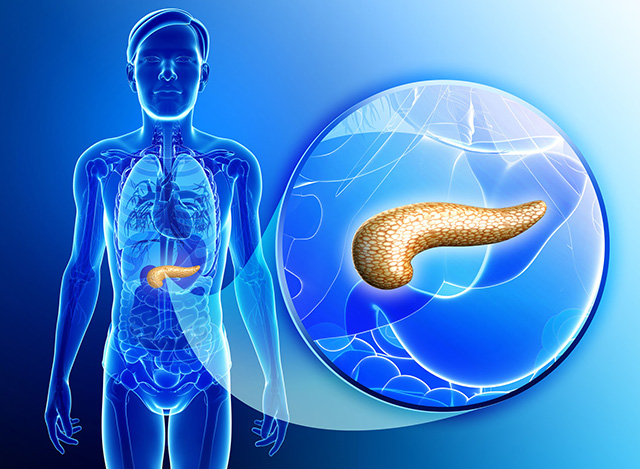Anatomy and position of the pancreas in the abdomen
The pancreas plays an important role in our digestive system. It produces approx. 2 litres of digestive fluids per day. Its enzymes break down proteins, fats and carbohydrates to ensure that they can be efficiently absorbed by the colon walls. The gland also produces hormones, which regulate the blood sugar level. However, its position, hidden behind the stomach, means that it is difficult to examine. “That is the reason why pancreatic illnesses are often only discovered at a very late stage.”
The pancreas is a small organ, ca. 80 150g in weight and 16-20cm long. It lies hidden in the abdomen between the stomach and the spinal column and is situated behind the peritoneum (abdominal membrane) in the plexus.
The head of the pancreas lies next to the duodenum while the tail touches the spleen. The pancreas is a buttery sponge-like tissue, which makes stitching after an operation especially complicated.
The pancreas can be divided into three parts:
- The head (caput), which rests in the loop of the duodenum with its hook-like appendage (processus uncinatus)
- The middle part (called corpus), which crosses the spinal column and the aorta
- The tail (cauda), which ends at the spleen.
Professor Dr. Steffen Leinung, Head of the Department of General Surgery, Visceral Surgery and Thoracic Surgery and also Director of the Pancreas Centre in Leipzig at the HELIOS Park Clinic in Leipzig explains: "The symptoms of pancreatic cancer like pain in the upper abdomen or digestive problems remain often too unspecific for too long and can therefore not be traced back to their actual origin. That’s why pancreatic cancer is one of the cancers, which, unfortunately, even today has a bad prognosis."




